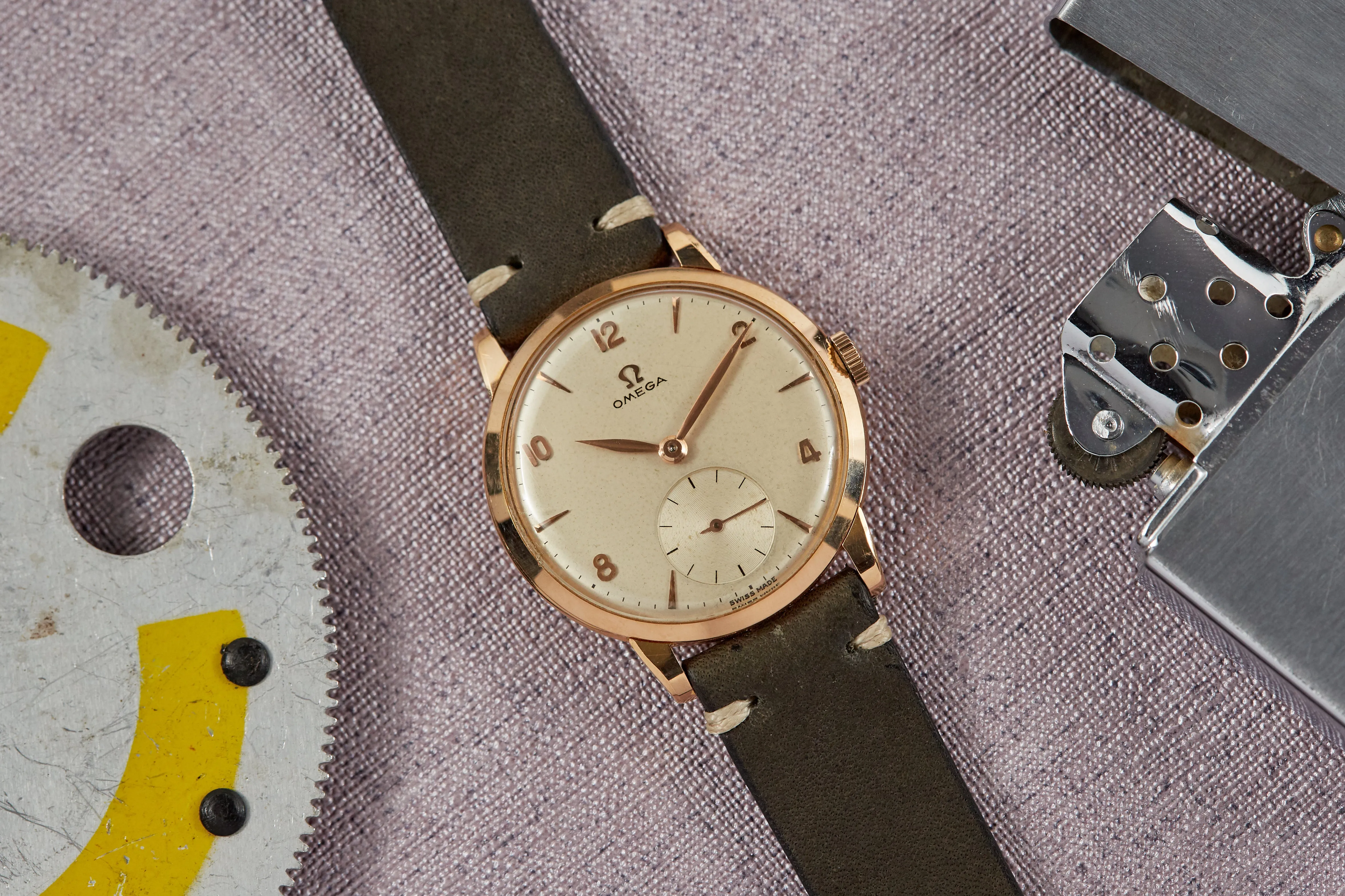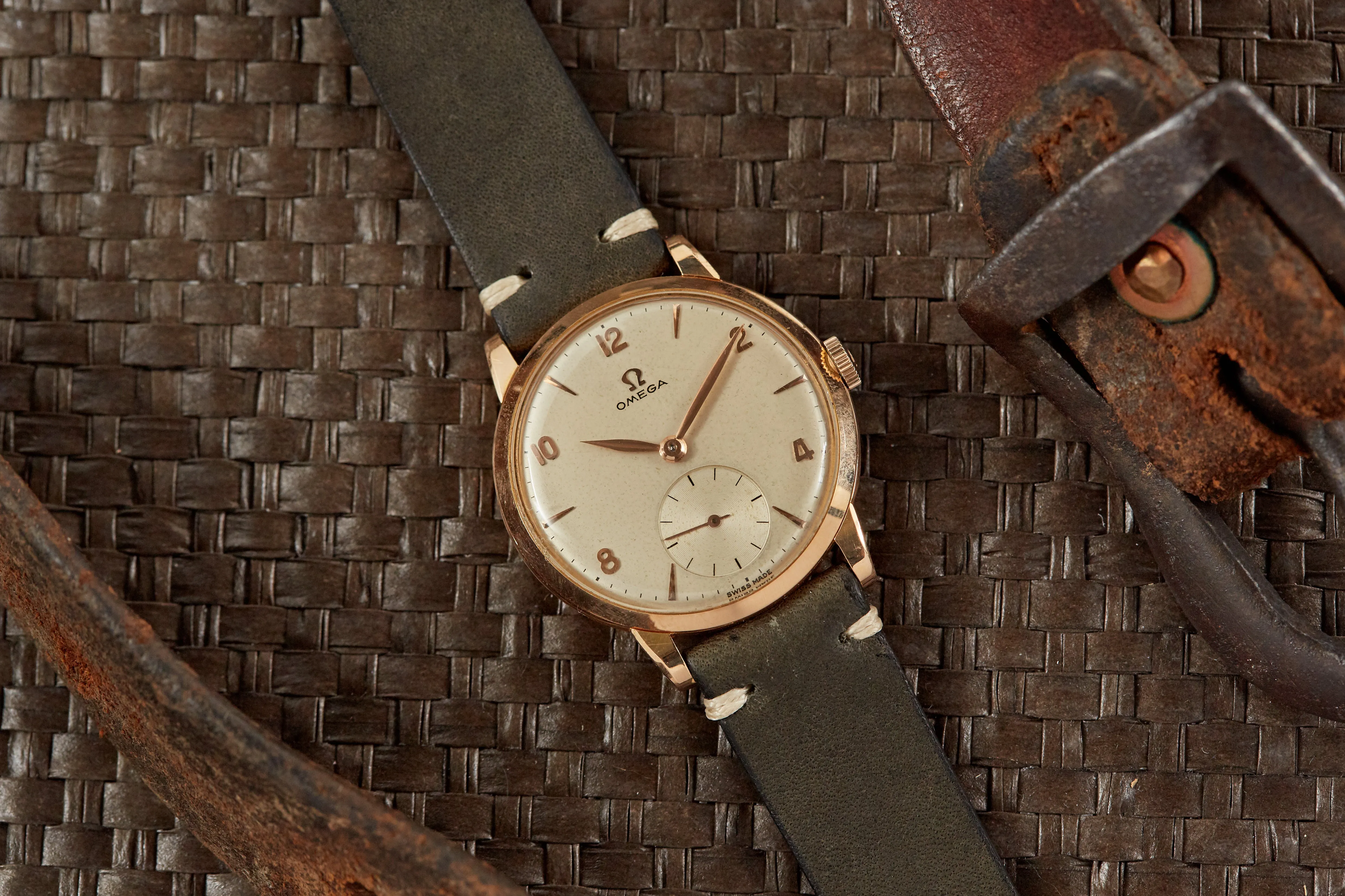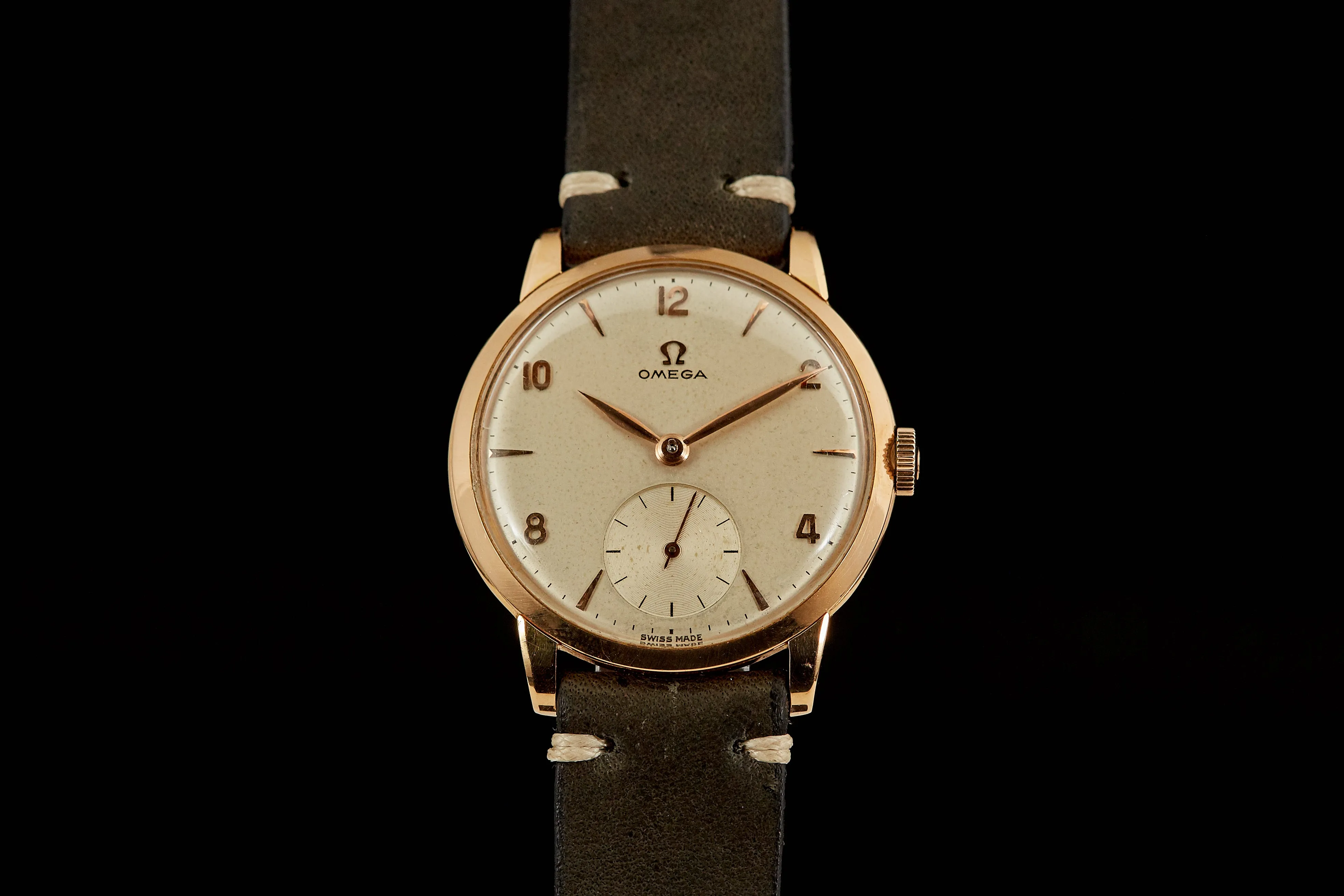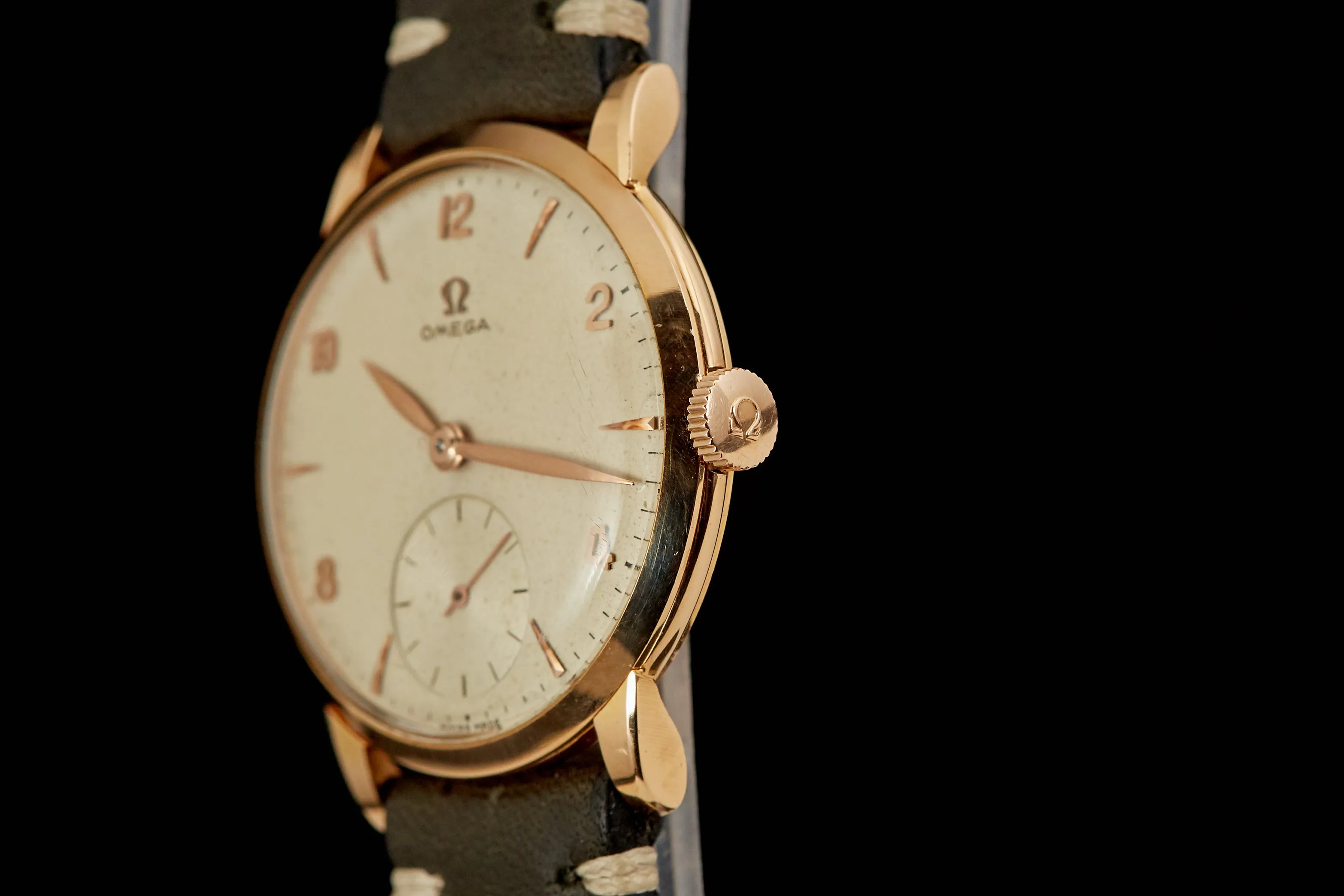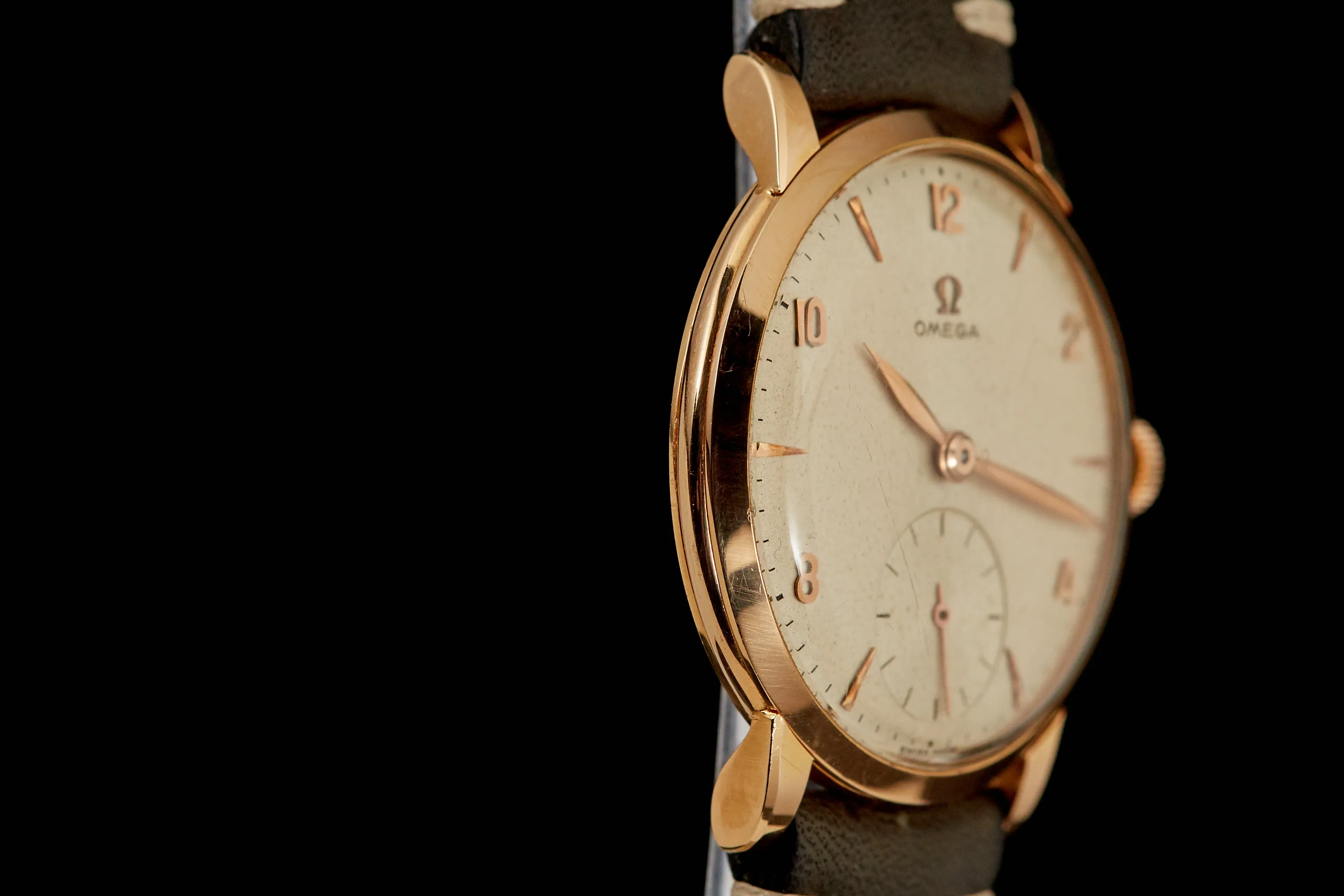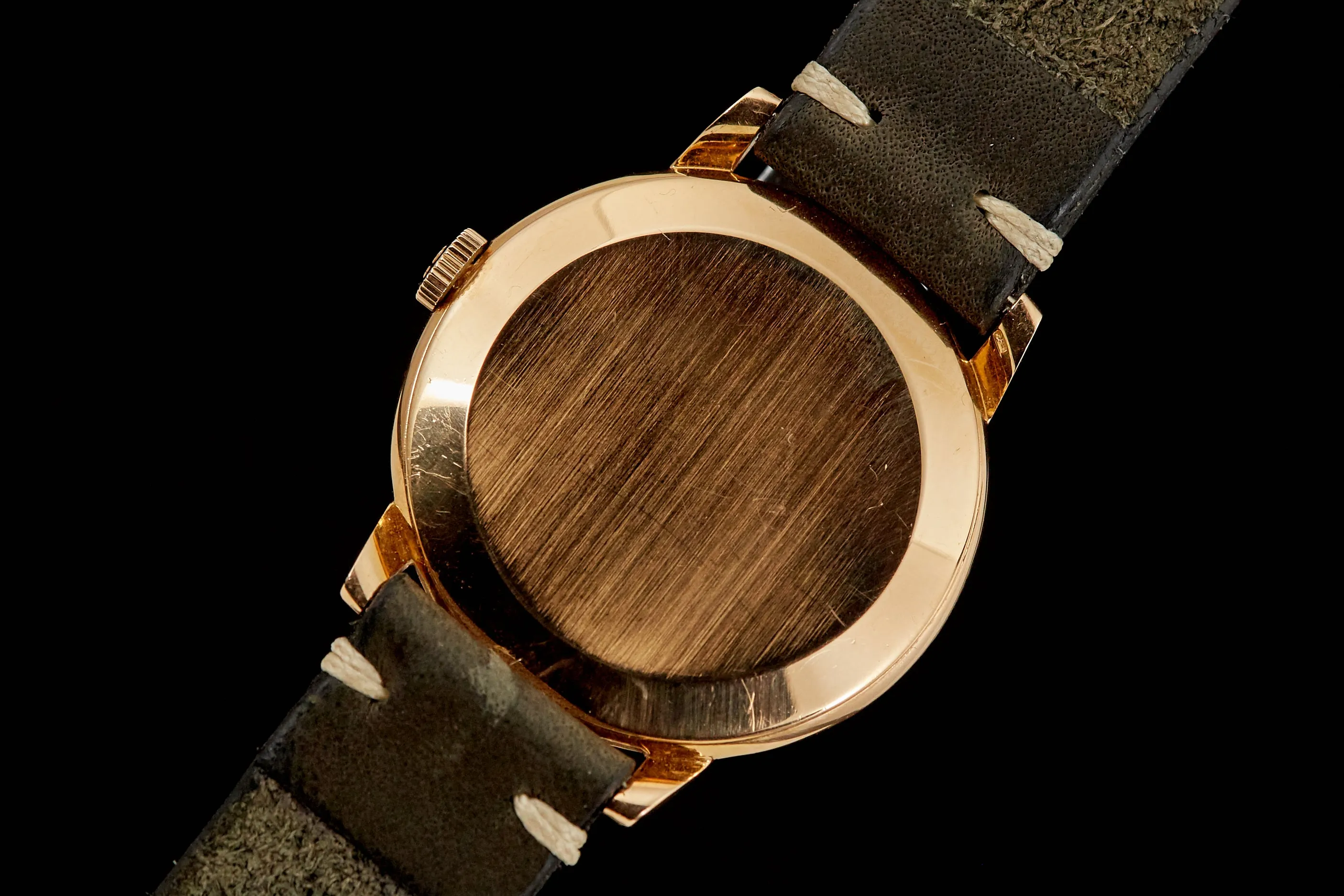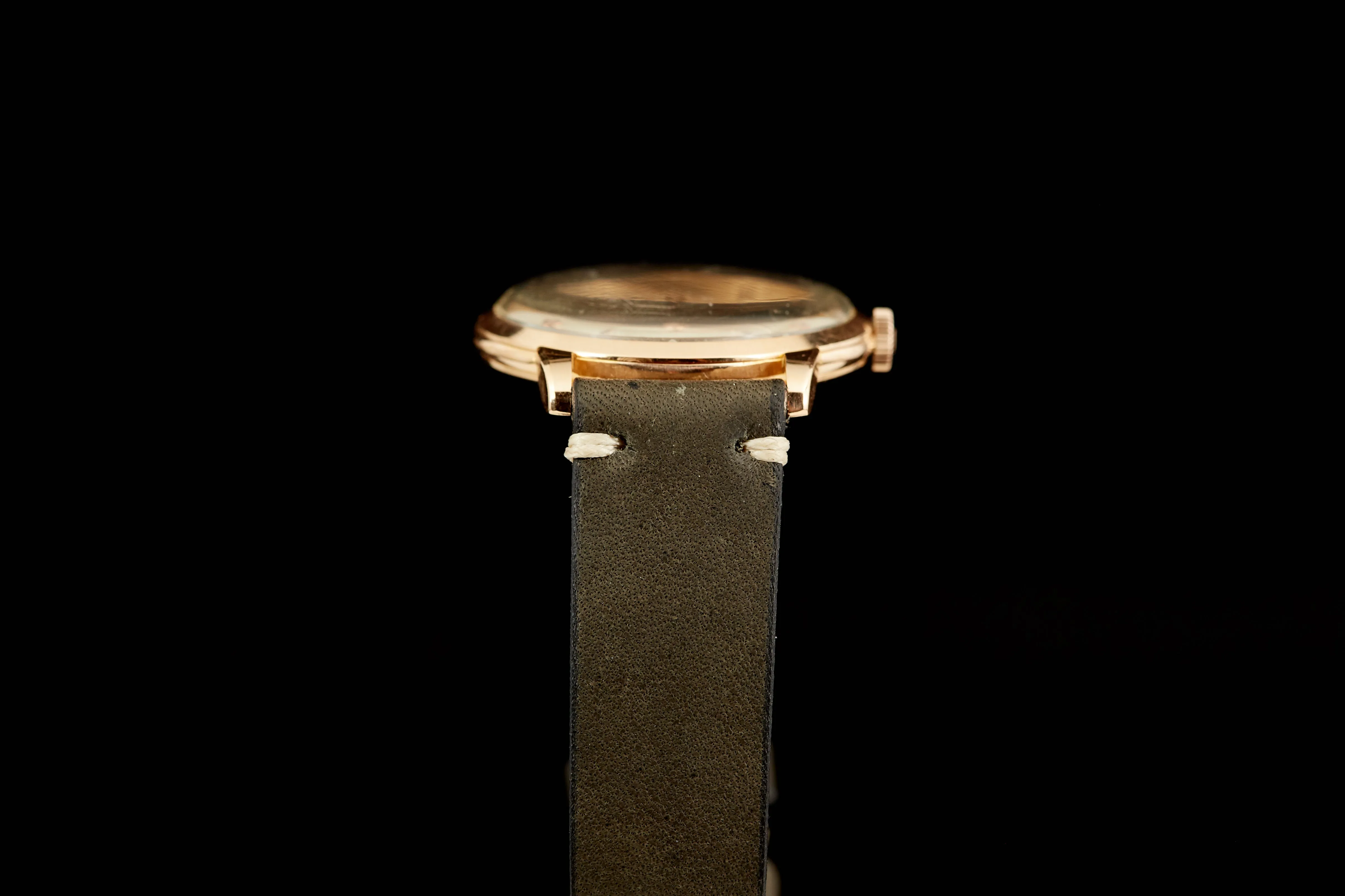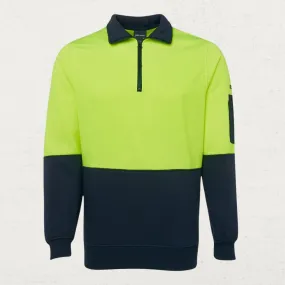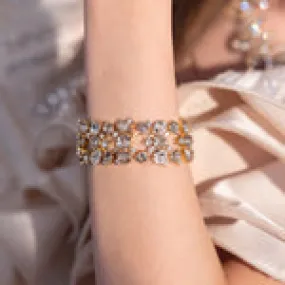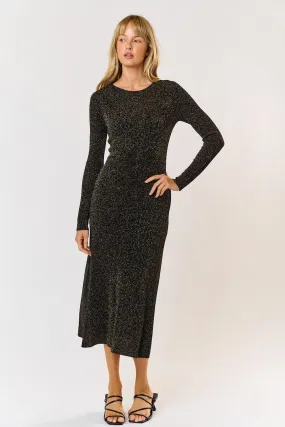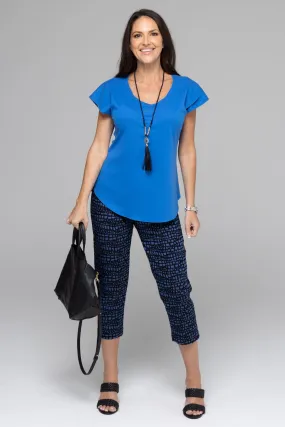Why We Love It
Here at A/S, we believe every person should have at least one dress watch in their collection.
Whether you have a fancy dinner, a wedding to attend, or something similar, a solid dress watch can really be a lifesaver. When considering a vintage dress watch, Omega should be one of the first brands that comes to mind. They have a long history of producing high-quality dress designs and their value proposition is excellent. But with hundreds of variations in different sizes and case materials, it can be overwhelming to find one you love.
We try and make it simple.
This example is a simple, no-frills dress model with a hand-cranking Calibre 267 movement cased in solid 18k rose gold. At 35mm, the case has a very slim profile, fitting nicely under a sweater or suit. The feuille handset and applied Arabic indices in rose gold match the refined aesthetic With a lot of negative space, Omega implemented an oversized sub-seconds dial, rounding out its beautiful appearance.
If you're thinking about a quality precious metal dresser that won't break the bank, look no further. See? That was easy.
The Story
In the aftermath of World War II, Omega, the prolific Swiss manufacture that had poured most of its production efforts into military-grade wristwatches for pilots and officers, dusted itself off and dived headlong into producing consumer pieces once again. But unlike the pre-war years, Omega sought to build watches that could be worn in more everyday conditions, watches that could look good on the wrist while also standing up to the onslaught of travel, weather and daily use.
Many of the watches produced in the years immediately following the war were infused with the lessons that Omega had learned while producing reliable wristwatches for servicemen; they used stainless steel cases with simple, stalwart movements, kept dials uncluttered and legible and dotted them with radium for added visibility in low-light environs.
Even with these style notes coming right out the war-time guidebook, Omega took care to make their new consumer pieces beautiful, using yellow and pink gold as it once again became available, and introduced a variety of dressier executions. While the noteworthy Seamaster line was being driven largely by Omega's automatic movements, other pieces, like this one, were filled with simpler, durable manual-wind movements, making the the overall product more economically approachable to the average consumer.




